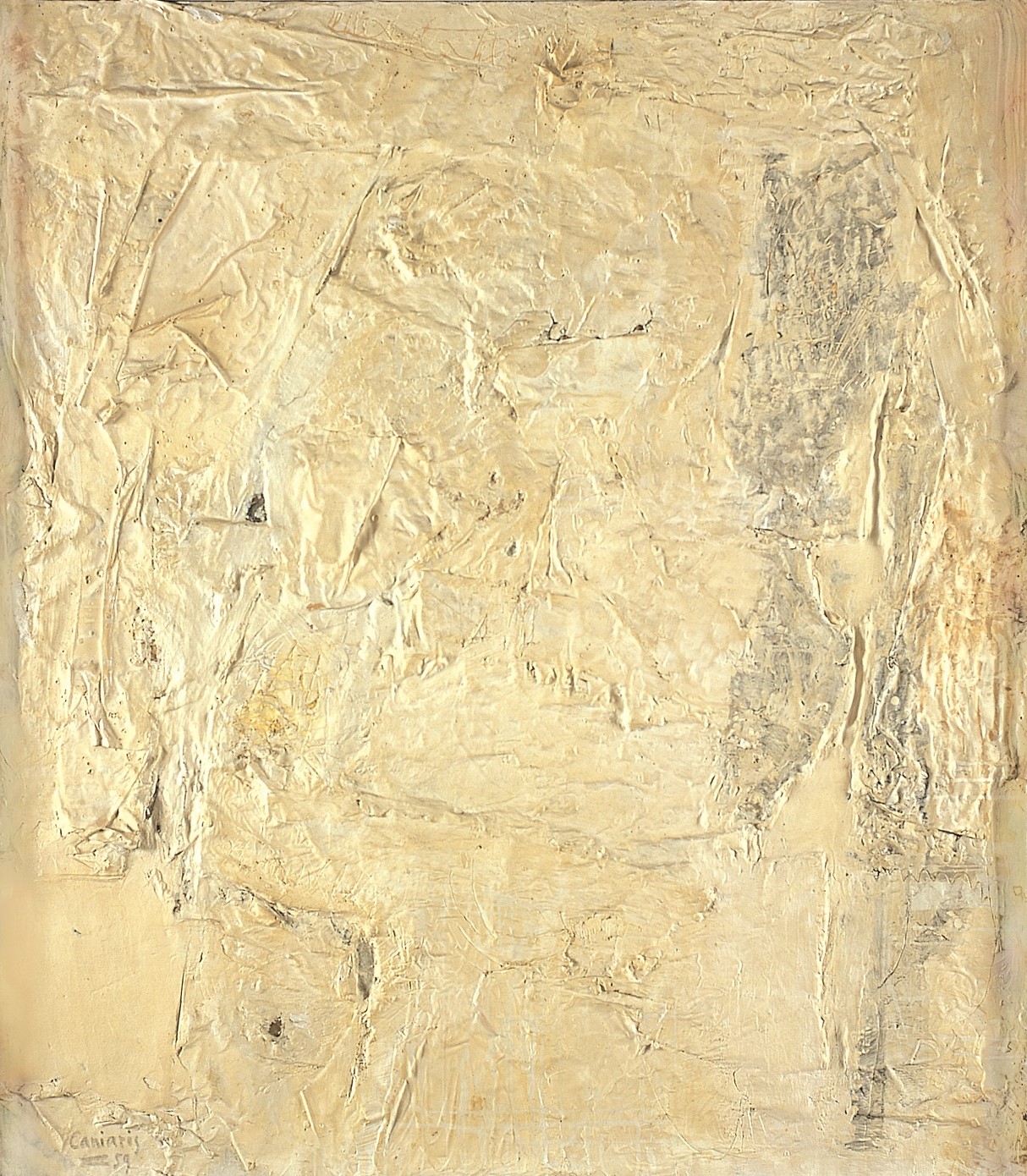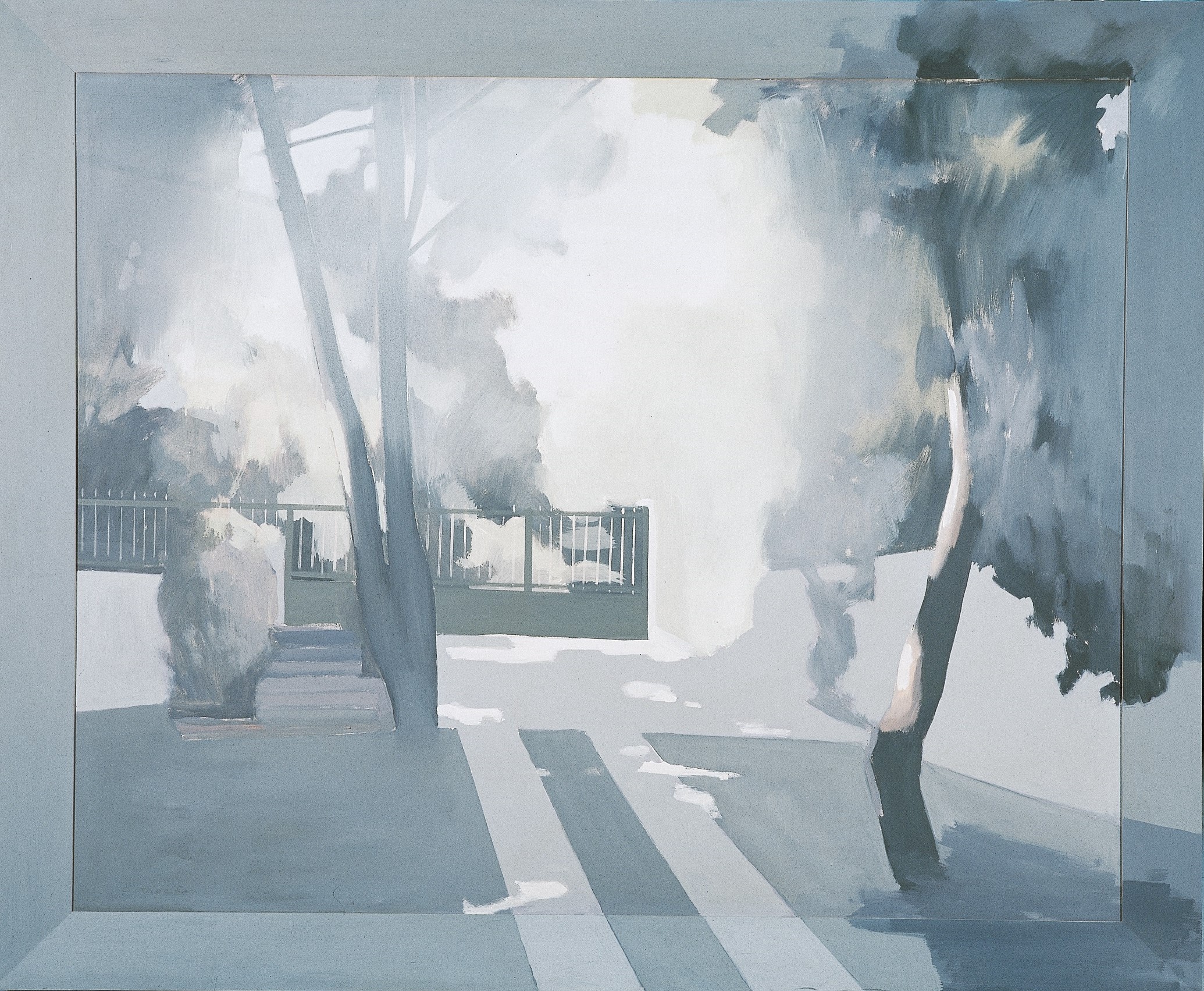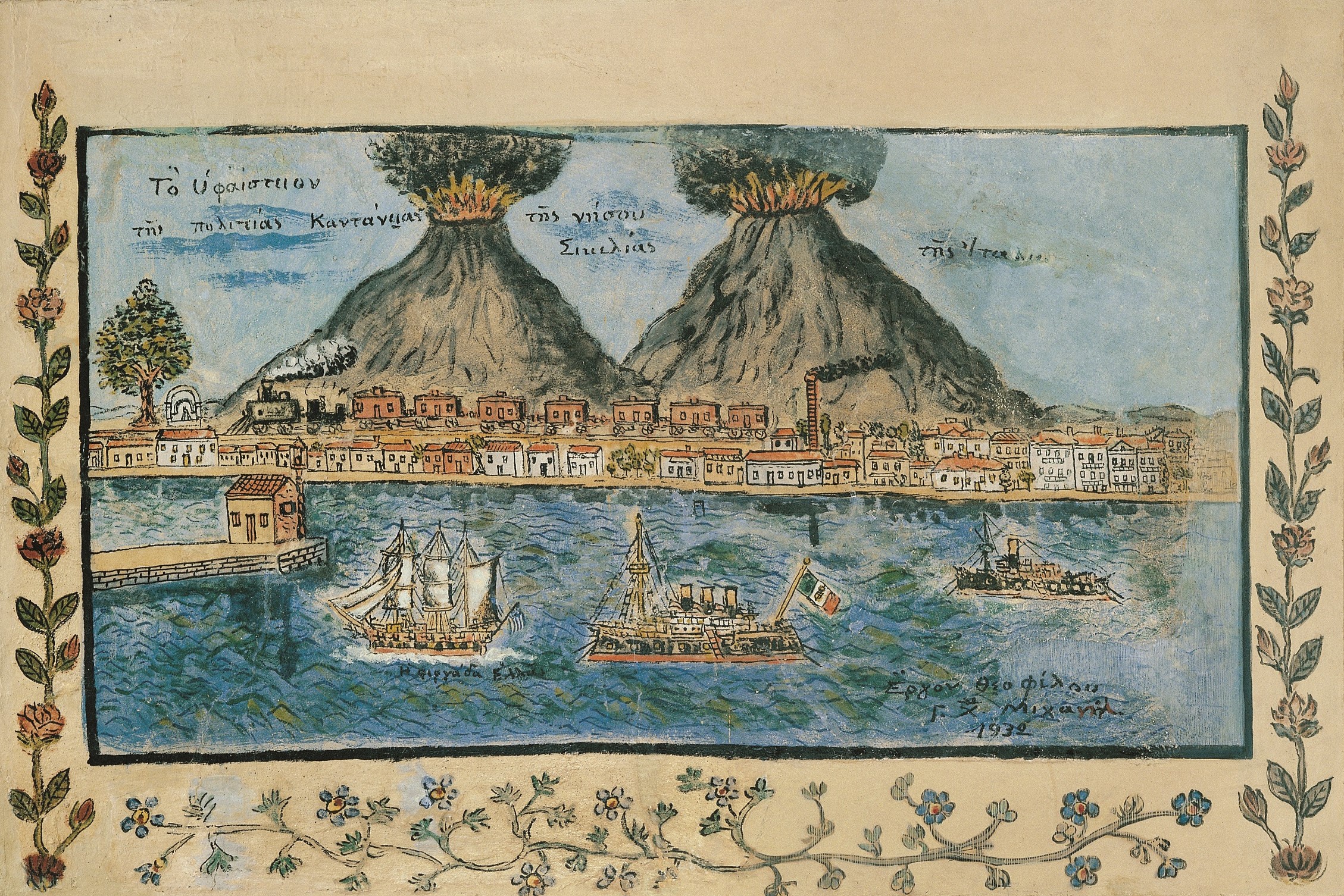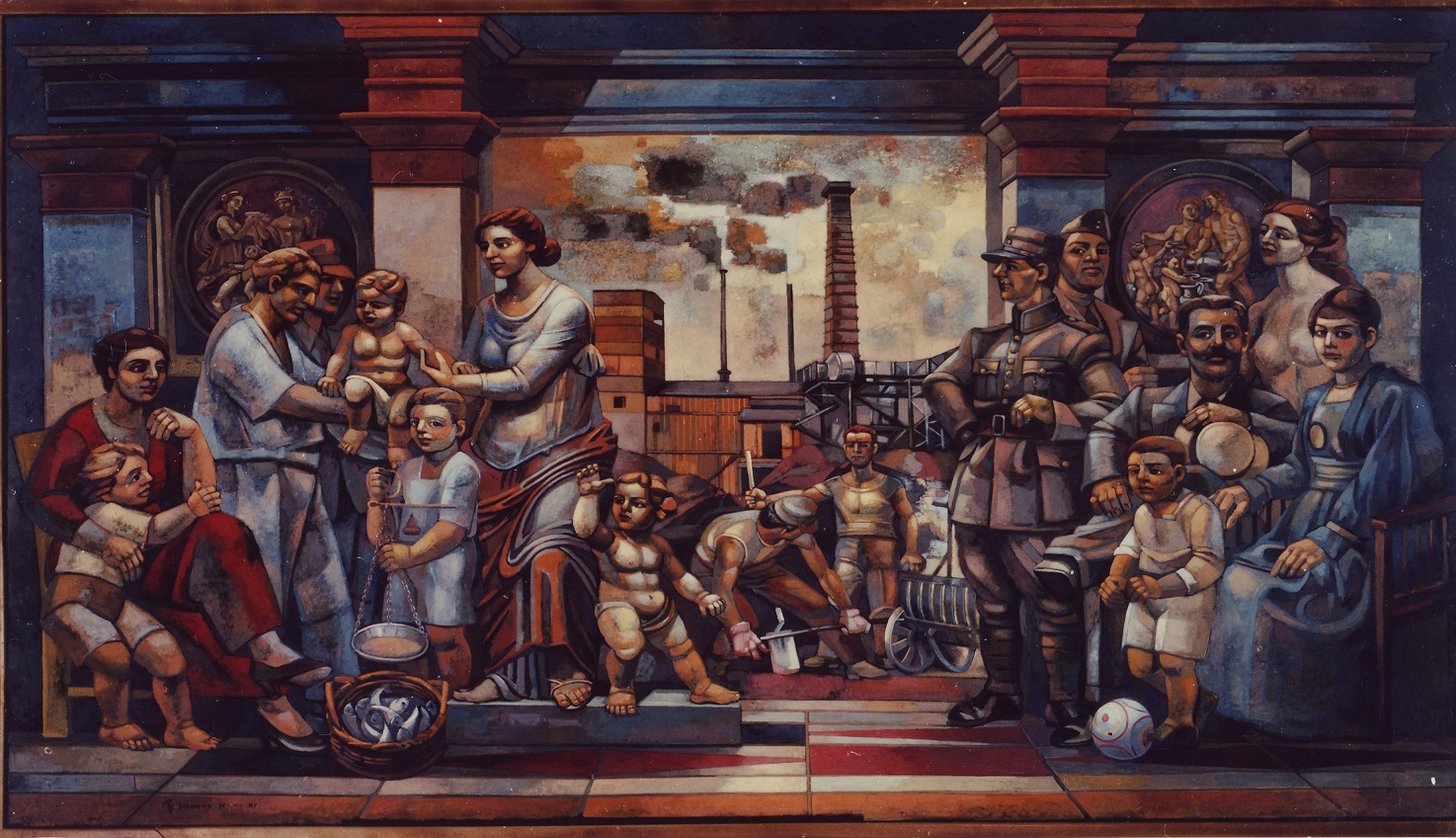Spyros Papaloukas, Arsanas of Agios Gregorios Monastery
With the work Arsanas of Agios Gregorios Monastery Spyros Papaloukas revisits the theme of Athonite landscapes, 4 years after his return from Mount Athos. The painter remarkably combines Impressionism with the spirituality of Byzantine art. Throughout his work, he demonstrated that modern art and Greekness are not mutually exclusive.
A composition on a vertical axis
The work Arsanas of Agios Gregorios Monastery by Spyros Papaloukas depicts the small port where the monks of the seaside Agios Gregorios (Saint Gregoryt) Monastery of Mount Athos keep their boats. In a sun-drenched landscape, one can see the small buildings, the boats and the water reflecting the bright morning light. Behind the buildings, a lush forest emerges.
The composition develops on a vertical axis. It is marked by its clear and bright hues, as well as the filtered light that is uniformly diffused on the painting’s surface. Papaloukas has omitted the details. This way, he succeeds in giving greater emphasis to a feeling of evanescence and fleeting impressions.
The relationship with the Athonite landscape
Papaloukas visited Mount Athos in November 1923 and stayed there for a year. During that time, he created numerous works with related themes and developed an experiential relationship with nature.
What particularly intrigued him was the semantic dimension of the Athonite landscape. To him, both the monasteries and the natural landscape of Mount Athos itself exuded a unique sense of tranquillity, and conveyed the need for deep communication with the divine.
Combination of Impressionism and Byzantine art
4 years after his return from Mount Athos, Papaloukas revisited the theme of the Athonite landscapes and created this particular work. In his composition, he has managed to remarkably combine Impressionism with the spirituality of Byzantine art.
Contrary to the works he created during his stay at the Athos peninsula, in this instance he adopted a more expressionist painting style. The once subtle tonal gradations have been replaced by bold coloured areas that add strength and vigour to the whole composition.
His life in a nutshell
Spyros Papaloukas (1892-1957) was born in Desfina, Parnassida. He studied Painting at the Athens School of Fine Arts under Spyridon Vikatos, Dimitrios Geraniotis and Georgios Roilos. He continued his studies at the Académie Julian and Académie de la Grande Chaumière in Paris.
In 1921 he took part in the Greco-Turkish War of 1919–1922 as a war painter. In 1956 he was appointed professor at the Athens School of Fine Arts.
Artistic influences
Papaloukas created his own personal and genuinely authentic style. His work reflects a permeating sensitivity and is marked by his experiential relationship with nature.
In 1923-1924, he stayed at the monasteries of Mount Athos, where he studied nature and Byzantine art. He was able to incorporate them in his paintings, combining them with the post-Impressionism trends of Gaugin, Les Nabis and the Pointillists.
Papaloukas used various styles for his portraits. In his icon paintings, he attempted to combine traditional Byzantine forms with elements of contemporary art movements.
Favourite themes
Papaloukas worked with portraits and still life. His themes were determined quite early by:
- His interest in Byzantine history.
- His need to communicate with nature.
The painter’s influence
Papaloukas had a significant influence on modern-Greek art and later Greek painters. Through his work, he demonstrated that modern art and Greekness are not mutually exclusive.
For this reason, he is considered a precursor of the Generation of the 30s. The Generation of the ’30s includes important painters, such as Photis Kontoglou and Yannis Tsarouchis, who combined modern movements with Hellenic elements.
A recognised artist
Papaloukas took part in exhibitions of the Greek Artists Association, of which he was a member. He also participated in group exhibitions in Greece and abroad.
In 1976 his work was presented in a retrospective exhibition at the National Gallery and in 1982 at the City of Athens Cultural Centre.
Spyros Papaloukas in the Alpha Bank Art Collection
Our Collection also features Papaloukas’ work Arsanas of Pantokratoros Monastery from the same group of works with themes from Mount Athos.
It is one of the first representations of the subject. This is why it is noticeably different from later representations.
The work of art in our publications
The work Arsanas of Agios Gregorios Monastery by Spyros Papaloukas is referenced in the Alpha Bank publications:
- The Alpha Bank Collection. Paintings – Prints – Sculptures, edited by Irene Orati.
Buy the publication The Alpha Bank Collection. Paintings – Prints – Sculpture (only available in Greek) on the Alpha Bank e-shop.
- The Alpha Bank Collection. Greek Art from 1920 until Today, edited by Irene Orati. The publication accompanied the same-titled exhibition.
Buy the publication The Alpha Bank Collection. Greek Art from 1920 until Today on the Alpha Bank e-shop.
In other literature
The piece is also referenced in the publications:
- Kampanis, Spyros Papaloukas. The Mount Athos paintings, 2003
- Uprootings 1922-2022. Witnessing through art, 2022
The Alpha Bank Art Collection is not open to the public.
You can visit it by appointment. Contact us to book your visit.






